Ofcom Changes to Boost UK Full Fibre Broadband and Cut FTTC Prices
The telecoms regulator has today completed several wholesale market reviews, which among other things will force Openreach (BT) to adopt stiffer Quality of Service standards (installations and repairs), open up their cable ducts to rival ISPs and introduce a big price cut on 40Mbps FTTC broadband lines.
Ofcom’s review has largely chosen to leave newer “full fibre” FTTP/H/B and hybrid fibre G.fast broadband services alone (i.e. they don’t want to discourage the new services by being too heavy handed with regulation), while Virgin Media aren’t yet deemed to have Significant Market Power (SMP) like Openreach and have also escaped the regulatory hammer.
However the regulator has finalised new charge controls and changes for various other services and, to prevent BT from stifling new investment by rivals as network competition emerges, the operator will not be allowed to make targeted wholesale price reductions in areas where rivals are starting to build new networks (details).
Jonathan Oxley, Ofcom’s Competition Group Director, said:
“Full fibre meets the country’s future broadband needs, as demand for data soars.
Ultrafast speeds will allow people to download entire films, or businesses to share huge files, almost instantly. Full fibre will also underpin exciting technology like remote healthcare diagnostics, 5G mobile and connected devices.
The measures we’ve set out today will support the growing number of companies who have already announced plans to build full-fibre networks, and open the way for even more ambitious investment around the UK.”
Matt Hancock, UK Secretary of State for Digital (DCMS), said:
“Full fibre is vital to build a Britain that’s fit for the future. Ofcom’s measures will be instrumental in supporting full fibre roll-out by promoting competition and ensuring widespread availability of these services. The whole telecoms sector must now come together – in the national interest – to invest in the digital infrastructure that the UK needs and become a model of great customer service.”
The most prominent change is surely their proposed price reduction on the ‘up to’ 40Mbps (10Mbps) upload tier of Openreach’s “superfast broadband” Fibre-to-the-Cabinet (FTTC / VDSL2) service. This service can already cover around 9 out of 10 UK premises and it’s fast growing towards almost universal coverage.
As a result Ofcom now believes that it’s time to cut the wholesale price of the 40Mbps tier, which should bring the price down much closer to the level of slower ADSL2+ based copper line broadband products and thus make it easier to shift subscribers off those older connections. On top of that BT/OR will no longer be subject to the detailed VULA Margin Condition test was imposed in 2014.

In the regulator’s view this change will “help BT’s rivals to compete for customers, while several build out their own full-fibre networks,” which is at least partly true. Internet providers like TalkTalk, Sky Broadband and other ISPs will no doubt rejoice and it will help to fuel stronger uptake, which is also good for the Government’s Broadband Delivery UK programme (i.e. clawback linked reinvestment of public funding to boost coverage).
On the other hand the regulator runs the risk of making slower FTTC so cheap that it could discourage investment in new / ultrafast networks, which might struggle to compete against the extremely low pricing. Lest we forget that both the Government and Ofcom are currently very keen to encourage more coverage of ultrafast “full fibre” FTTH/P broadband (example), especially via alternative networks.
A similar situation already exists in today’s market. Just under half of the broadband lines in the UK are still based off slower copper ADSL based lines and that’s partly because they’re so cheap and not everybody sees a need for the faster services (FTTC, HFC DOCSIS, FTTP etc.), which tend to attractive a higher monthly premium.
Quality of Service
The review will also introduce stronger service performance and quality standards, which would require Openreach (BT) to install and repair related services more quickly than they do today. The targets for this have been tweaked a bit since the original March 2017 proposal (here), but they still represent a big improvement.
Openreach will be required to (by 2020/21):
- Complete at least 88% of fault repairs within one or two working days of being notified, up from 80% today;
- Complete at least 97% of repairs within seven working days;
- Provide an appointment for 90% of new line installations within 10 working days of being notified, compared to 80% within 12 days currently; and
- Install 95% of connections on the date agreed between Openreach and the telecoms provider, up from 90% today.
Ofcom states that these rules will also be complemented by a range of other improvements, such as the new system for automatic compensation when things go wrong (here).
Cable Duct and Pole Access
As expect the regulator has also finalised their approach to Duct and Pole Access (DPA), which allows Openreach’s existing telegraph poles and underground cable ducts to be used by rivals in order to deploy new ultrafast broadband services (e.g. FTTP/H). Openreach will also have to repair faulty infrastructure and clear blocked tunnels / ducts where necessary for providers to access them, which can be very expensive.
Ofcom states that this measure, which is already being used by providers such as Virgin Media and Cityfibre, will “fundamentally change the business case for building new networks … It could cut the upfront costs of laying fibre cables by around 50% – from £500 per home, to £250. It could also reduce the time required for digging works, enabling fibre to be installed in some streets in a matter of hours, where it would have taken days.”
Openreach must also ensure there is space on its telegraph poles for extra fibre cables connecting homes to a competitor’s network. And it must release a ‘digital map’ of its duct and pole network, so competitors can plan where to lay fibre. On many of these points Openreach is already way ahead of the regulator and has started to implement most of the changes via a revised Physical Infrastructure Access (PIA) product.
Key Decisions (DPA / PIA)
• Access to BT’s ducts and poles. BT must allow other telecoms providers access to deploy their own networks in BT’s underground ducts and chambers or overhead on its telegraph poles. This network access obligation also requires Openreach to make adjustments to the existing infrastructure, so it is ‘ready for use’ – repairing faulty infrastructure and relieving congested sections where necessary.
• Enabling greater flexibility in the use of ducts and poles. We are relaxing the current PIA usage restriction to allow ‘mixed usage’: telecoms providers can deploy local access networks offering both broadband and non-broadband services, provided the primary purpose of the network deployment is the delivery of broadband services.
• Access on equivalent terms to ensure a level playing field. BT is subject to a ‘no undue discrimination’ condition, requiring strict equivalence in respect of all processes and sub-products that contribute to the supply and consumption of duct access, unless BT can demonstrate that a difference is justified. We will support these measures through ongoing monitoring to ensure that they are effective.
• Access to digital maps to support large-scale network planning. Telecoms providers must be provided with integrated access to digital maps with Openreach’s duct and pole network records, including detailed location information and the extent of spare capacity.
• Processes to ensure efficient network deployment. BT is required to publish a Reference Offer, setting out how operational processes (e.g. ordering PIA, clearing blocked ducts) will work, together with relevant terms and conditions including service level agreements and guarantees.
• Pricing to support competitive investment. We are setting a cap on PIA rental charges which results in significant reductions compared to current rental charges. Costs associated with making the existing infrastructure ready for use will be recovered from all users of the infrastructure, up to a limit of £4,750 per kilometre, with other ancillary charges required to be cost-based. We are also placing financial reporting requirements on BT, so that we can monitor the effectiveness of the pricing regulation and the ‘no undue discrimination’ condition, in terms of the recovery of costs between BT’s own use and that of other telecoms providers using duct and pole access.
We should point out that it’s long been possible for ISPs to access Openreach’s existing ducts via the old PIA solution, although rivals complained that this was often cumbersome (administration), suffered from awkward costs and was intended more for helping to connect residential homes (i.e. using it to provide leased line style rural backhaul or big business connectivity wasn’t possible, although this helps alternative networks to build a more economically viable model). The new approach seeks to rectify many of those failings.
A number of trials have already been conducted (here), although these did suffer from a few problems with blocked ducts, limited duct space, cost and a lack of maps for new cables causing various hiccups (here and here). Improvements have been made since then but BT still warns that not all of their ducts will be usable.
An Openreach Spokesperson said:
Overarching
“Ofcom’s statement gives us certainty on their approach to key products and we welcome Ofcom’s intention to support investment in full fibre networks. But to incentivise further FTTP investment, infrastructure builders – including Openreach as the largest FTTP builder in the UK – need to be certain they can secure a return on their investment and a fair bet. In particular, we will need to look carefully at geographic pricing restrictions and need to define future fair bet conditions in more detail.
In the meantime Openreach is getting on with the job of making Fibre-to-the-Premises broadband available to three million premises by the end of 2020. That puts us on the right trajectory to cover ten million premises with FTTP by the mid-2020s if the conditions are right. We want to go significantly beyond that – to the majority of the UK – but the pace and extent of our investment will depend on how quickly other key enablers can be realised. We welcome Ofcom’s comments around support for a future digital switchover.”
On MSLs/service
“Continuing to improve service is our number one priority, having exceeded Ofcom’s broadband targets for the last three years. We view these as a minimum, not a target, and we’ve been making great strides over the last year in reducing the number of faults on our network and speeding up new connections and repairs. We’re determined to go even further so we support the ambition of higher service standards.”
Ducts and Poles
“Our ducts and poles have been open since 2011 and we have been sharing a digital map of this network for more than a year.
We’ve been making the process more accessible and user-friendly and we’ll now work closely with our customers to consider how to develop and implement these latest proposals effectively.”
BT estimates that the price changes in today’s Ofcom WLA draft statement, for the directly charge controlled products, will have a year on year adverse financial impact on Openreach’s revenue and profit in 2018/19 in the range £80m – £120m.
The operator added that there will also be further year on year impacts on Openreach, resulting from price reductions to the directly charge controlled products, in each of the successive two financial years in the range of low to mid tens of millions of pounds. Additionally, Openreach’s cost base will increase as a result of meeting the more demanding minimum service levels required in WLA markets.
Conclusions
Overall Ofcom notes that “full fibre” (FTTH/P) broadband services are currently only available to around 3% of UK premises and they believe that today’s changes will deliver a significant improvement. Indeed recently a number of alternative network (AltNet) providers have announced significant investments and the regulator expects that these could boost coverage to 20% by 2020.
For example, Hyperoptic aim to cover 2 million urban premises with FTTH/P by 2022 (aspiration for 5 million by 2025), while Vodafone with Cityfibre will reach 1 million by 2021 (aspiration for up to 5 million by 2025) and Virgin Media plan 2 million by around 2019/20. Not to mention all of the work by smaller operators and Openreach’s own plan for 3 million by 2020 (aspiration for 10 million by c.2025). TalkTalk has also proposed a similar deployment.
One caveat with the above is that we don’t yet know how much overlap (overbuild) will exist between these rival FTTP/H deployments, which is a significant factor and difficult to predict. In some areas we might potentially see a choice of several FTTH/P providers and streets being dug up several times, although hopefully natural competition will help to balance things out and some consolidation may follow as new networks grow.
On the other hand today’s improvements are largely as expected and won’t change the viewpoint that Ofcom remains fixated on fostering a market of cheap broadband services, which sounds good for consumers but does make it harder to sell faster “full fibre” lines (i.e. if you can do everything you want with a 40Mbps FTTC today for only a little money then would you pay significantly more for FTTH/P? Plenty would but is it enough to make the model work).
Likewise precious few of today’s measures will do anything to support Openreach’s on-going calls for more flexibility in regulation, which they say is needed if they are to solidify a plan for expanding their FTTP network to 10 million premises by around 2025 (currently they’ve only put a solid strategy in place for reaching 3 million premises by 2020).
2017/18 Wholesale Local Access Market Review
https://www.ofcom.org.uk/../wholesale-local-access-market-review
UPDATE 8:48am
Budget ISP TalkTalk has sent in its response and we expect more to follow.
A Spokesperson for TalkTalk said:
“Ofcom’s strong decision is good news for consumers, competition and investment. We have long argued that Openreach has no incentive to invest in the full fibre broadband that Britain needs when it could make excess profits by overcharging for copper-based services. Ofcom’s move not only protects customers in today’s market, but also ensures Openreach and others are encouraged to invest in the full fibre networks of tomorrow.”
UPDATE 9:42am
Hyperoptic has offered a comment.
Dana Tobak, CEO of Hyperoptic, said:
“We welcome the news of Ofcom’s draft statement on the Wholesale Local Access market. In particular its recommendations for supporting investment in Full Fibre network build by limiting the lowering prices on the 40 Mb FTTC product, allowing mixed use for duct and pole access which will allow infrastructure builders to create stronger business cases for more investment and ensuring equivalence of inputs with respect to BT’s own use of DPA.
Of course, the details matter, and matter significantly, so final implementation of the statement needs to follow in both spirit and operational processes.
We look forward to Openreach’s publication of a reference offer, which fully matches or exceeds Ofcom’s statement, given its independence from the BT Group. This will ultimately create a better digital future for the UK, not just serve the interests of BT retail.”
We’ve also added Openreach’s comment above.
Mark is a professional technology writer, IT consultant and computer engineer from Dorset (England), he also founded ISPreview in 1999 and enjoys analysing the latest telecoms and broadband developments. Find me on X (Twitter), Mastodon, Facebook and Linkedin.
« Cityfibre Calls on Ofcom to Rethink its Approach for Full Fibre
Latest UK ISP News
- FTTP (5511)
- BT (3514)
- Politics (2535)
- Openreach (2296)
- Business (2260)
- Building Digital UK (2243)
- FTTC (2042)
- Mobile Broadband (1972)
- Statistics (1788)
- 4G (1663)
- Virgin Media (1619)
- Ofcom Regulation (1460)
- Fibre Optic (1393)
- Wireless Internet (1389)
- FTTH (1381)

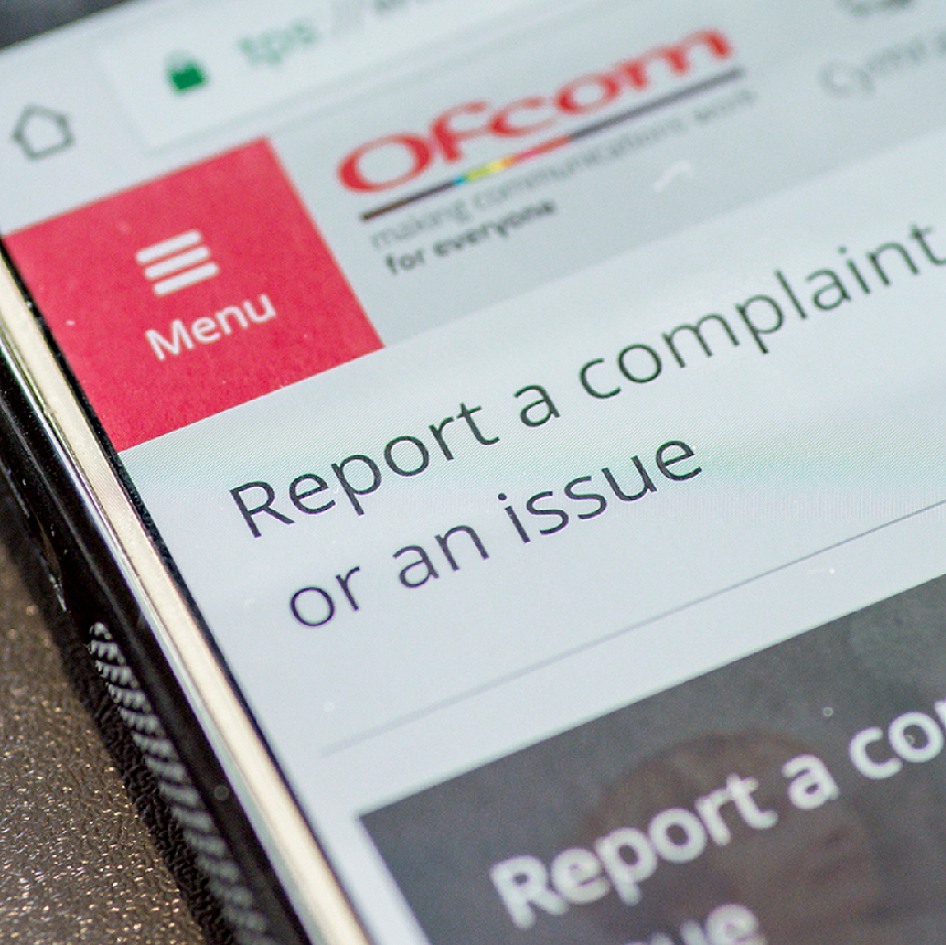

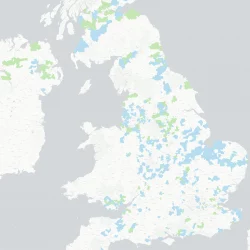

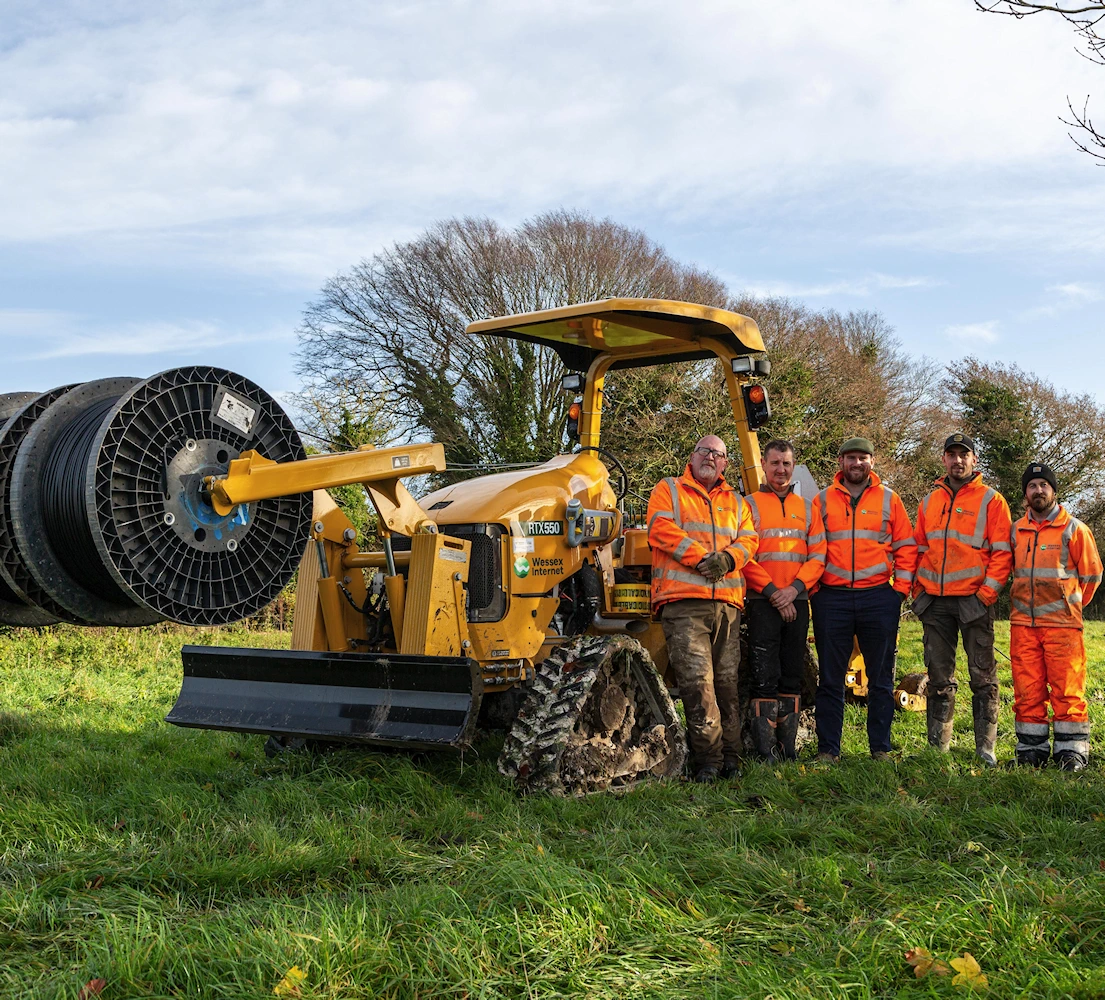












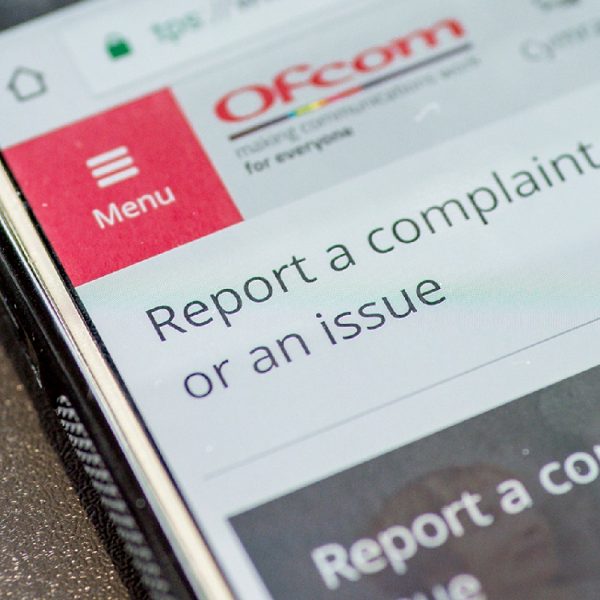

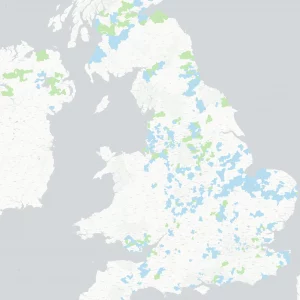



































I like the idea of forcing a wholesale price cut on slower products. That will rattle OR.
Is it fair, will it work?
no&no
There solved that for you 🙂
It does seem a bizarre decision by OFCOM to reduce the wholesale cost of 40/10 FTTC.
40/10 is the second most popular speed variant of Openreach’s FTTP (only marginally below 80/20), so are people expecting to pay a premium for exactly the same speed variant delivered by a different technology?
Also, wholesale price decreases are only meaningful to consumers/businesses if the ISPs selling them reduce their pricing also. I feel this price decrease will just increase the margins for ISPs.
If OR make less money on 40/10, then they will be eager to sell customers a faster product. In areas where there is no faster product, it now make economic sense to upgrade the infrastructure.
@AndyH
Is the 80/20 speed tier more popular than 40/10? That surprises me as I would have thought 40/10 would have been the most popular product..
@Stuart:
No it won’t the cost difference between FTTC and FTTP is far too large. All this does it make the FTTC all but loss making. And they have no legal means to get rid of copper at present.
@ Sunil Sood
The split used to be around 60/40 in favour of 40/10, however BT’s upgrade of Infinity 1 customers to 80Mbps (and possibly other ISPs) has let to 80/20 being marginally more popular now.
How much are they reducing it by though? (Serious question). Hopefully down to a fiver.
Hi Andy
It’s interesting to see that 80/20 is more popular than 40/10 from your comments. Could I ask where you got that information from? Was it from Openreach itself?
Cheers
Its about time they retired the ADSL services – they need to shift their focus onto universal VDSL and full fibre
Whilst BT face little competition in the local loop they will in my view continue to drag there heels
Whether this latest OFCOM change ill make much difference who knows. In theory other providers have had access to the BT ducting for some time but BT manage to price it so that is was not viable. The other problem is excluding Virgin and a few other small providers BT has a near monopoly in the local loop so trying to compete against a provider with 90% of the market is tough
There may be more hope with OPENREACH being separated from the main BT Group. That largely removes the current conflict of interests and may encourage them to roll out full fibre a lot faster. It my even be possible for a number of ISP’s to work together to get fibre rolled out
If this is used as a logical way to get people off ADSL to VDSL and thereby clear the spectrum so that more bandwidth can be given to GFast then this makes sense.
I am no big fan of GFast but running ADSL and VDSL and GFast as the same time is bad spectrum use.
As I wrote on another thread provided there is a cheapo tier somewhere for the masses OFCOM will be happy. And 40/10 is fine for intro level domestic use. I don’t see it as a fundamental human right to access to 4k TV. Although those who need more should be able to buy more at will as they can via 80/20 or GFast in a lot of cases.
I do agree that people who want faster should pay a bit more and have no issue with 80/20 being proportionally more expensive but proper SLA’s and things should also flow from the higher charges.
And I will bang the tin drum on upload speeds again!
“I don’t see it as a fundamental human right to access to 4k TV. ”
Give the Supreme court time it will be 😉
Is this really regulation or bullying?
Is this how low Ofcom has gotten now? Make FTTC cheap so BT cannot make money/recover costs on it and force them to invest in something else?
It’s hard to see this as a good decision for anyone.
What other solution would you recommend? OpenReach has shown time and time again that it does things in the interest of making money, not serving customers. If the only way to force them to invest in FTTP is to reduce their income from existing outdated copper tech, then so be it I say.
“What other solution would you recommend?”
Putting an end date on LLU for a start.
Why do we need FTTP? What can’t a residential user not do on 80mbps that they can do on 330mbps?
James
Read back what you have written yourself to see how wrong it sounds.
That aside why would it force them to deploy fttp. Why not more gfast? Or even worse nothing at all.
Yes like any other business they are here to make money. If they get screwed in the residential sector. What is to stop them investing and focus more on the business sector instead?
Ofcom have shown time and time again they aren’t getting it right. And now in desperation they are resorting to blackmail.
Oh btw they are investing in a fttp programme, not sure how you missed it.
Competition. BT has a near monopoly in he local loop and that is the issue OFCOM is trying to address. Why would BT from choice invest in full fibre when it has a captive market that has nowhere else to go?
“Competition. BT has a near monopoly in he local loop and that is the issue OFCOM is trying to address. ”
Ummm what by forcing BT to rollout FTTP. How does that resolve the near monopoly?
Unless you are thinking the latest PIA price reduction will open the flood gates and TalkTalk, Sky and Vodafone will start piling in with fibre.
Won’t happen.
if the rest do tip-toe in (‘cos its is unlikely to be a rush) it will be to cherry pick all the viable areas and do nada for the rest
“Is this really regulation or bullying?
Is this how low Ofcom has gotten now? Make FTTC cheap so BT cannot make money/recover costs on it and force them to invest in something else?
It’s hard to see this as a good decision for anyone.”
***PLAYS VIOLIN***
SHAME LOL
A lot of people receive good performance from ADSL2 and in some cases performs better for those on VDSL2.
Its not really about good performance – its the older of the current technology and needs to be retired to make way for better networks,
What would you do about LLU?
@salek
If VDSL produces a slower speed than ASDL in a particular location, or even no coverage, how can it be described as a better network?
Extend the network so there is at least universal coverage at speeds in excess of ADSL then maybe there is a case for scrapping ADSL, but not before
@gerarda
There are things like extended reach VDSL which could be used (and have been trialled) to improve speeds for those who currently get better speeds with ADSL but rather than VDSL but which can’t be used until ADSL is removed from all the customers on a specific cab which the ADSL LLU firms object too
Well that can be fixed by stopping ADSL/ADSL2+ and dropping the baseline frequency of FTTC to start at ADSL levels. The only reason ADSL reaches further is high frequency roll off. High frequency tones travel less far: simple as that.
The commensurate drop in the top frequencies can then be occupied by a drop in the baseline frequency of GFast. So GFast can be stretched to higher throughputs.
However, if you are doing all that it rather begs the question as to by 35b wasn’t used rather than GFast as you have pretty much the same net effect for spending a lot less money. But it hasn’t been and that, as they say, is history.
I have seen nothing from the trial results of long reach VDSL or even the theoretical modelling of it to suggest that it performs better than ADSL on very long lines.
But even if that was not the case if you look at all the migration issues and problems Openreach had when they started installing infill cabinets then you can see the reason for their preference for FTTP instead of migrating millions of lines from ADSL.
@gerada
I agree that FTTP is a better solution PON or not.
And that in the cold light of day GFast, and I am a GFAst user, is a total waste of effort and money.
Things are moving fast now with fibre rollouts and a big engineering effort, such as GFast, will have taken a lot of resources at OR away from FTTP solutions.
@ A_Builder
That’s strange. Only a few weeks ago, you were telling everyone on here you were a FTTC user and how saturated your connection was with everyone streaming and uploading 4K videos.
Now you ‘claim’ you’ve got G.fast and it’s a waste of time and money.
lol, whoops. someone else caught trolling on here!
@AndyH
I posted a comment on the installation of GFast at one of the locations that I control/own. You commented on my comment, you may recall!
I have around 12 locations at any one time with connectivity some with FTTC, some pure fibre and one with GFast. All from various providers some sites with multiple connections for redundancy.
So when I am talking comparatively this is a comparison with my personal and business experience of managing multiple connections.
I also sent Mark Jackson the screen captures of a few of the line tests that were run when GFast went live. So Mark knows the whole back story.
When I am saying that GFast is a waste of time what I am saying is that the diversion of effort by OR to do this to match VM is not sensible when they should be stepping on the gas, as OR have now acknowledged, to push pure fibre faster. And this is not me on the tin drum this is OR board that are now openly saying fibre faster.
GFast works but it is not a good commercial idea as the effort/benefit ratio doesn’t get OR any further then a FTTC upgrade to 35b in the majority of homes. It is an issue of commercial/resource focus.
Also need to be retired – technology moves fast, its holding back deployment of new networks
Mark – great report, saves me having to wade through masses of detail
It’s all well and good. I’m in a village still on ADSL. But on a EOL. And for lines like this seems really slow to deal with.
Come on OpenReach. Surely it should be done now. 3 years and waiting.
Jonny
If your line has a download speed in excess of the USO of 10Mbps download, then you are in for a very long wait.
OFCOM, by reducing the amount that Openreach can charge ISPs for FTTC, have removed the economics for an FTTC expansion to premises who are above the USO requirement.
And I’m still at a loss as to how Virgin Media which passes 50% of the UK market is NOT a Significant Market Power (SMP).
Come off it OFCOM, VM is an SMP and needs to open up too. It also needs to have its quality of service regulated as it is a joke what it is allowed to get away with.
Exactly what I was thinking. Hopefully OFCOM are doing their own work to determine the situation and not just relying on what VM feed them.
I think when they finish their expansion to 60% they will likely be labelled as a significant market power. I hope ofcom force them to let users use 3rd party modems, that would improve reliability.
Ofcom aren’t going to force them to allow bring your own device.
If they were required to wholesale they would remain able to control what was allowed connection to their network.
Much as Openreach do on FTTP. Cable and PON networks are not the point to point networks DSL networks are. On those what is connected to the network matters.
BT given the chance will sit on FTTC/G.Fast for 50 years so I welcome anything that will make FTTP possible ASAP for anyone who wants it.
I also think we need to move away from unmetered bandwidth, that way giving everyone a fast symetrical connection won’t hurt leased line sales. I love having unlimed usage but would happily pay for what I use if it meant faster speeds, especially on the upload.
“so I welcome anything that will make FTTP possible ASAP for anyone who wants it”
But I don’t think this will have that effect. How does stripping revenue from Openreach help them to roll out more FTTP?
There’s absolutely no situation where FTTP is required over G.Fast. None, Nada, zilch, zero.
Required, no, but it makes more sense to deploy it over G.fast in some instances. I can’t see BT building a G.fast pod into every DP.
@John,
anyone can get FTTP wherever they want it, they just have to pay the installation costs, which will be significant for those not near the necessary existing infrastructure.
“There’s absolutely no situation where FTTP is required over G.Fast. None, Nada, zilch, zero.”
True for those lucky enough to be within a few hundred metres of a cab maybe.
@Chris P
Not true, irrespective of cost, no FTTP product is available here in West Devon.
We could get a leased line, but currently £50k in excess construction charges, mostly due to sub standard poles and blocked ducts.
@Guy
What I meant by FTTP was a fast 100mbs + connection to anywhere you want, typically over fibre but microwave or other radio is also possible, aka leased lines. The point being you can get a fast net connection, regardless of what they want to call it, anywhere you want if you are prepared to pay for it.
Just an FYI, other service providers have been able to use OR ducts for years without it being forced and have chosen not to, sky trialed their own network in several places and it didn’t work, talk talk expressed no interest
Virgin have been banned from putting in new network apart from newsites in most county’s yet again for contractors not still king to regulation and too many other utility hits whilst installing. Bout time OR were given a break and more was put on the other multi-billion pound service providers. Shoddy out of date equipment in exchanges, poor equipment or not configured equipment being sent to customers, service provider engineers attending prior to OR engineers and not fixing faults in their domain. If ofcom/mps really want to do something about it force the fttp roll out and ditch everything else… It’s a waste of time doing anything else
OFCOM has made a big thing about shared duct access and that they seem to think it will encourage rival FTTP networks to be built.
I would be interested to know to what extend, if any, Cityfibre/Vodafone are using OR ducts. I know Cityfibre trialled it before, however it’s not clear what’s they are doing now. Their deployment from the splitter to the premises is using microtrenching, which doesn’t using OR ducting at all.
I’m not clear on what if any effect this will have on Market A pricing? Will Market A FTTC prices reduce, or will there still be a premium? How does the wholesale price of Market A FTTC compare with Market A ADSL? Will these changes in any way help upgrade Market A ADSL areas?
Will this stop OR from investing in areas that they currently fail to upgrade? Lovely to hear the argument over 80/20 or 40/10 but try 3/0.4
If they haven’t “invested” in your area yet it is probably because, on its own, it is not an investment but a liability. So I suppose you will probably have to wait until the next Ofcom “plan” about the USO or be lucky enough to live in an area like Scotland where there is already a tender to seek suppliers for a 30Mbps connection.
Does anyone have an opinion if these regulation changes will reduce the ‘excess construction charges’ being demanded for a leased line installation? I’ve been quoted £50k in ECC’s mostly due to sub standard poles and blocked/full ducts – as I read it, BT now have to fix these for free?
It makes no difference as this is DPA/PIA.
@Guy Cashmore
There is an element of the ridiculous that OR can pretend that maintaining their network is chargeable back to the customer.
The blocked ducts thing is silly and very overplayed.
Some of them have just got sludge in them and all they need is a low pressure jet wash to clear. Still in OR’s view this kind of basic housekeeping is an ECC not sure why OFCOM let them get away with it. If you have an asset the maintenance of the asset is part of the business case. If the asset fails through historical under investment = lack of maintenance then OR cannot expect to earn and R for the lack of I.
Let’s not forget it was not that long ago that as you drove around you would see PCP doors flapping in the breeze. Granted it is better now and most of them have decent locks on them but there was a good period of 15 years were fixing PCP shells was not on the agenda and I would assume the ducts were also ignored in the same way.
And yes occasionally you get roots into the ducts as well. But that is usually chargeable back to the owner of the tree or the insurers of the owner of the tree. So that should not result in ECC’s as where the tree roots go is usually pretty clear.
The bit where it does get tricky is where Utility Co A smashes Utility Co B’s ducts during say an emergency repair.
ECCs have nothing to do with maintenance of their infrastructure. ECCs cover the cost of building new infrastructure to support a new product or service.
Agreed, but OR appear to be using EEC’s to pay for repairs and improvements that should be funded from maintenance budgets, not a customer seeking a new service.
ECC’s for a leased circuit are a different matter – not least the infrastructure has to support the SLA on that circuit.
I wonder what cost you’d get back if you request FoD for that cluster of houses or a Community Fibre Quote? You might find it very different in price to a leased line
FoD isn’t available to order, so we can’t get a quote here. Community fibre have never given us a formal quote, the regional manger stated £50k+, at that point people lost interest.
the flinch Gap you had is based on X km from nears accessable fibre node and very few premises that would benefit so unsurprising the figure is circa 8-10k per premises assuming there were around 6 / 7 premises based on a sparse remote hamlet
@ Guy Cashmore
If you have evidence that Openreach are trying to charge ECCs because of poorly maintained infrastructure, then report this to OFCOM because they are not allowed to do this.
I have never seen a EAD quotation that mentions blocked ducts or sub-standard poles.
Am I missing something here? £250 per fibre connection is being touted. So I order a fibre between my home and work place a mile away, I a pay £500?
These numbers are nothing to do with what you would pay, or be asked for directly. And nothing related to the distance.
They are an average, calculated over a wide-area. They would be what a telco would be expected to have to invest to, say, pass every home in one city. For example, there are 290,000 homes in the built-up area of Sheffield. So Ofcom reckon it would cost £72m to deliver full-fibre to Sheffield.
Remember, this is a figure being invented by Ofcom, so doesn’t represent what, say, Sky would actually end up investing. To contrast the Ofcom number, KCOM appear to be aiming to deliver full fibre to under 200,000 homes at a cost of (IIRC) £85m.
As a different contrast, Openreach say they can reach 10m premises with costs of between £300 and £600 per property.
This investment (Ofcom’s guesstimate) would get fibre down the streets, but not actually connect a single property. Connecting a property might cost an extra £100-200, and you would likely be asked to contribute (or pay it all) via a retail ISP.
Will this even make companies such as SKY change their minds over FTTP? At the moment they are testing it but they have no incentive or confirmation they will adopt the technology. I have seen many people go for a full FTTP installation via Openreach direct only to find SKY turn around and say they can’t use FTTP yet.
Right now Vodafone seems to be the cheaper of the 5 big providers. BT along with SKY still are the most expensive when you consider the cost of wholesale FTTC will drop to £145 a YEAR and we are being charged around 2-3 times more than this by the actual providers it makes you wonder what you are paying your ISP for other than the supposedly free router and installation cost.